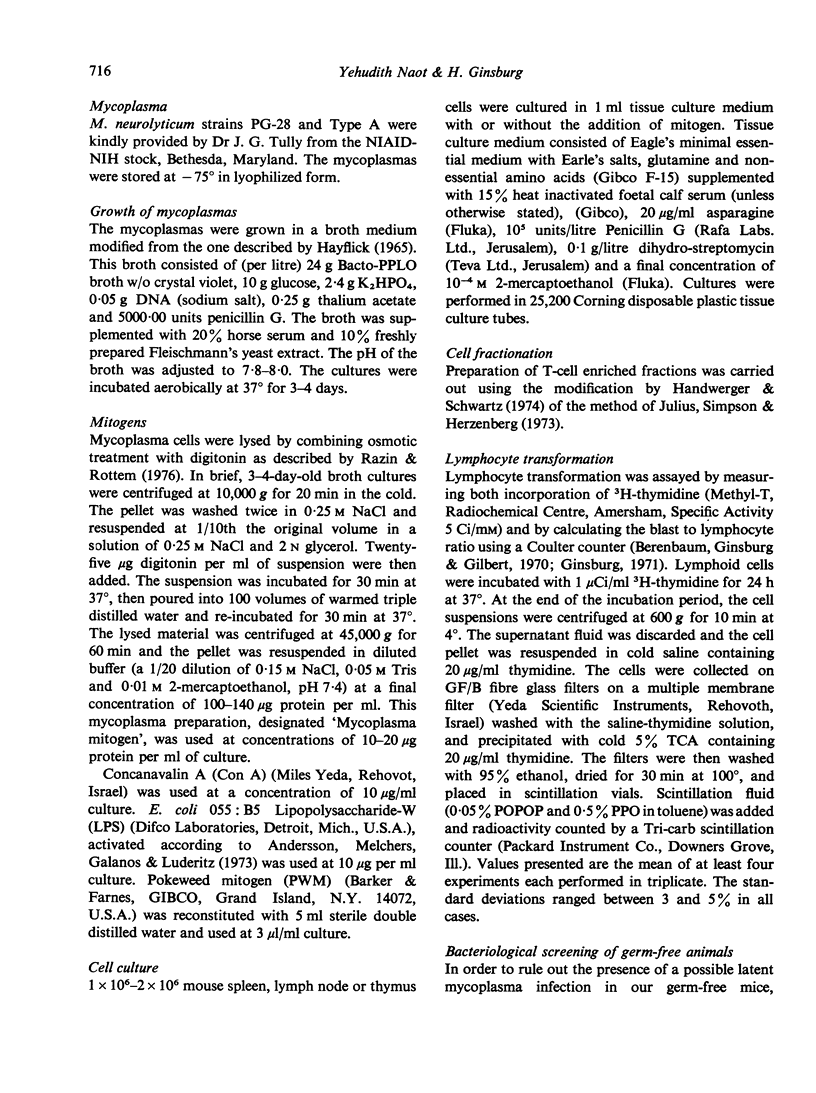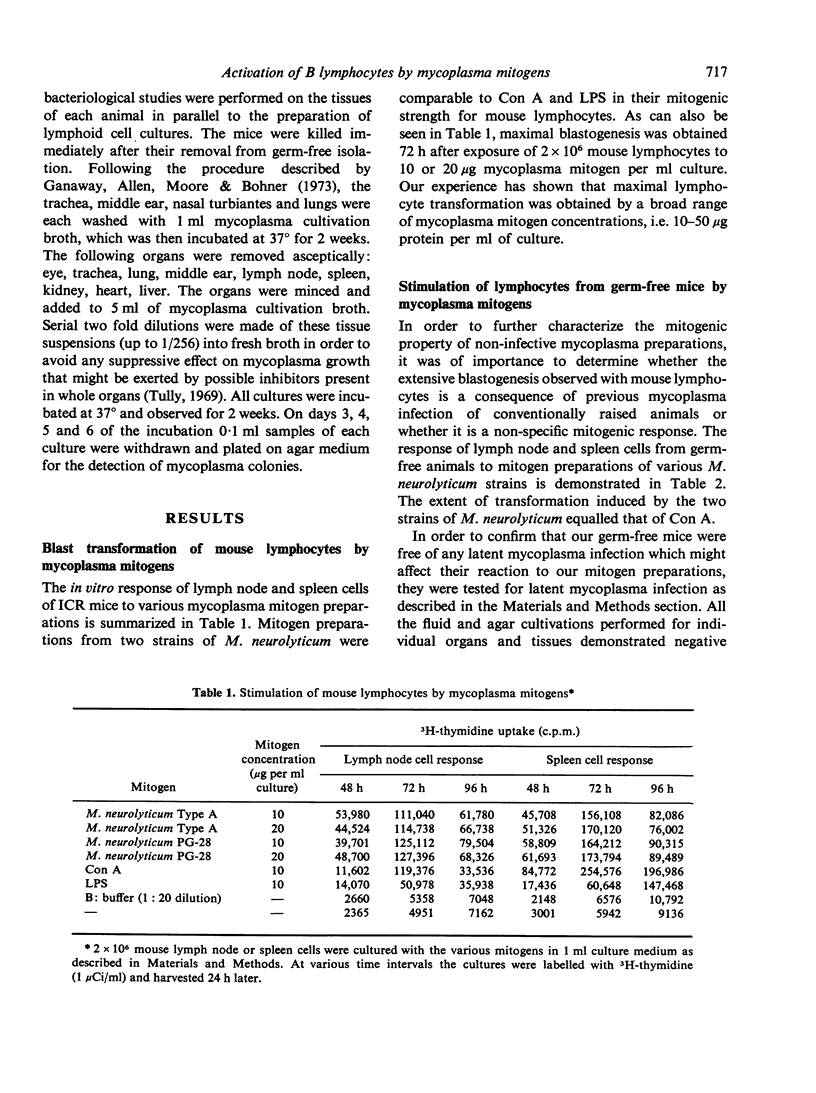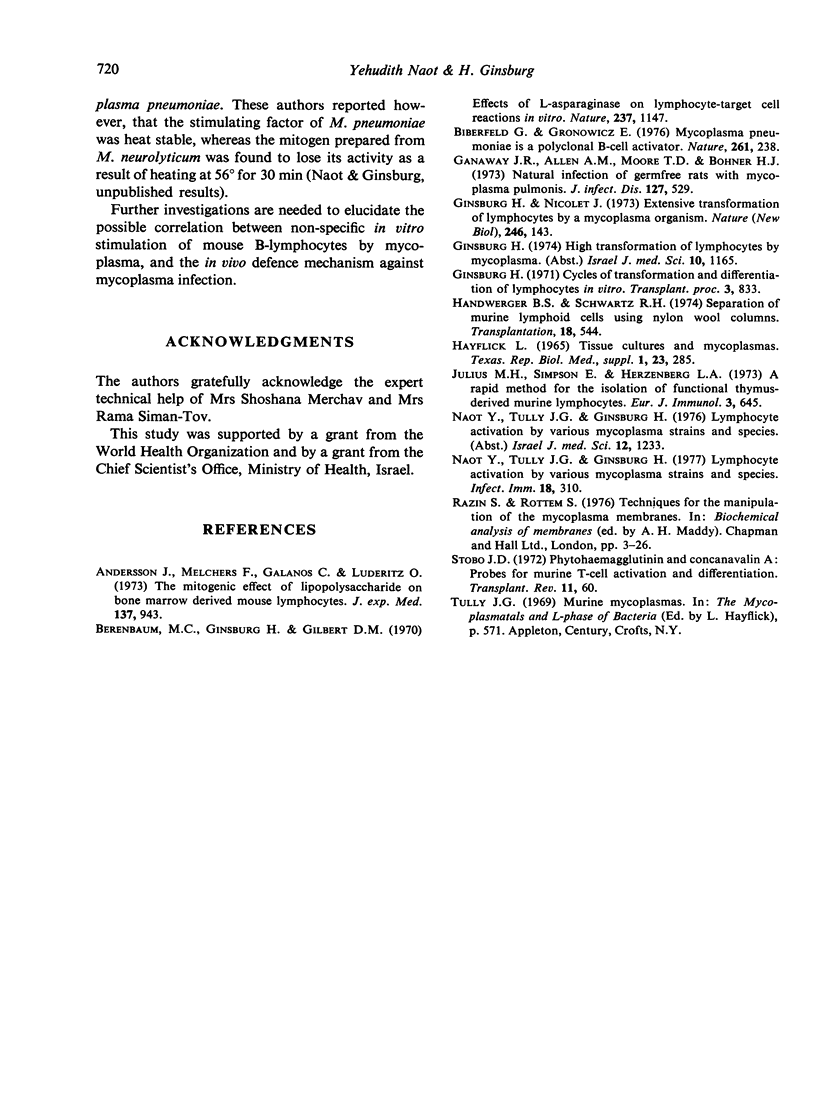Abstract
Various strains of the murine mycoplasma M. neurolyticum have been shown to induce extensive blast transformation of mouse lymphocytes, comparable in strength to mitogenicity exerted by these mycoplasma species on rat lymphocytes. The data summarized in this report demonstrate that this mitogenic effect is non-specific. Lymphoid cells from mycoplasma free, germ-free mice were activated to the same extent as those lymphocytes obtained from conventionally bred animals. Lymph node cell suspensions obtained from athymic nude mice were strongly activated by M. neurolyticum mitogen. Furthermore, mouse thymocytes and mouse T-cell enriched populations, were not stimulated by these mitogens. It was thus suggested that M. neurolyticum activates mouse B lymphocytes.
Full text
PDF





Selected References
These references are in PubMed. This may not be the complete list of references from this article.
- Andersson J., Melchers F., Galanos C., Lüderitz O. The mitogenic effect of lipopolysaccharide on bone marrow-derived mouse lymphocytes. Lipid A as the mitogenic part of the molecule. J Exp Med. 1973 Apr 1;137(4):943–953. doi: 10.1084/jem.137.4.943. [DOI] [PMC free article] [PubMed] [Google Scholar]
- Berenbaum M. C., Ginsburg H., Gilbert D. M. Effects of L-asparaginase on lymphocyte-target cell reactions in vitro. Nature. 1970 Sep 12;227(5263):1147–1148. doi: 10.1038/2271147a0. [DOI] [PubMed] [Google Scholar]
- Biberfeld G., Gronowicz E. Mycoplasma pneumoniae is a polyclonal B-cell activator. Nature. 1976 May 20;261(5557):238–239. doi: 10.1038/261238a0. [DOI] [PubMed] [Google Scholar]
- Ganaway J. R., Allen A. M., Moore T. D., Bohner H. J. Natural infection of germfree rats with Mycoplasma pulmonis. J Infect Dis. 1973 May;127(5):529–537. doi: 10.1093/infdis/127.5.529. [DOI] [PubMed] [Google Scholar]
- Ginsburg H., Nicolet J. Extensive transformation of lymphocytes by a mycoplasma organism. Nat New Biol. 1973 Dec 5;246(153):143–146. doi: 10.1038/newbio246143a0. [DOI] [PubMed] [Google Scholar]
- Handwerger B. S., Schwartz R. H. Separation of murine lymphoid cells using nylon wool columns. Recovery of the B cell-enriched population. Transplantation. 1974 Dec;18(6):544–548. doi: 10.1097/00007890-197412000-00013. [DOI] [PubMed] [Google Scholar]
- Hayflick L. Tissue cultures and mycoplasmas. Tex Rep Biol Med. 1965 Jun;23(Suppl):285+–285+. [PubMed] [Google Scholar]
- Julius M. H., Simpson E., Herzenberg L. A. A rapid method for the isolation of functional thymus-derived murine lymphocytes. Eur J Immunol. 1973 Oct;3(10):645–649. doi: 10.1002/eji.1830031011. [DOI] [PubMed] [Google Scholar]
- Naot Y., Tully J. G., Ginsburg H. Lymphocyte activation by various Mycoplasma strains and species. Infect Immun. 1977 Nov;18(2):310–317. doi: 10.1128/iai.18.2.310-317.1977. [DOI] [PMC free article] [PubMed] [Google Scholar]
- Stobo J. D. Phytohemagglutin and concanavalin A: probes for murine 'T' cell activivation and differentiation. Transplant Rev. 1972;11:60–86. doi: 10.1111/j.1600-065x.1972.tb00046.x. [DOI] [PubMed] [Google Scholar]


